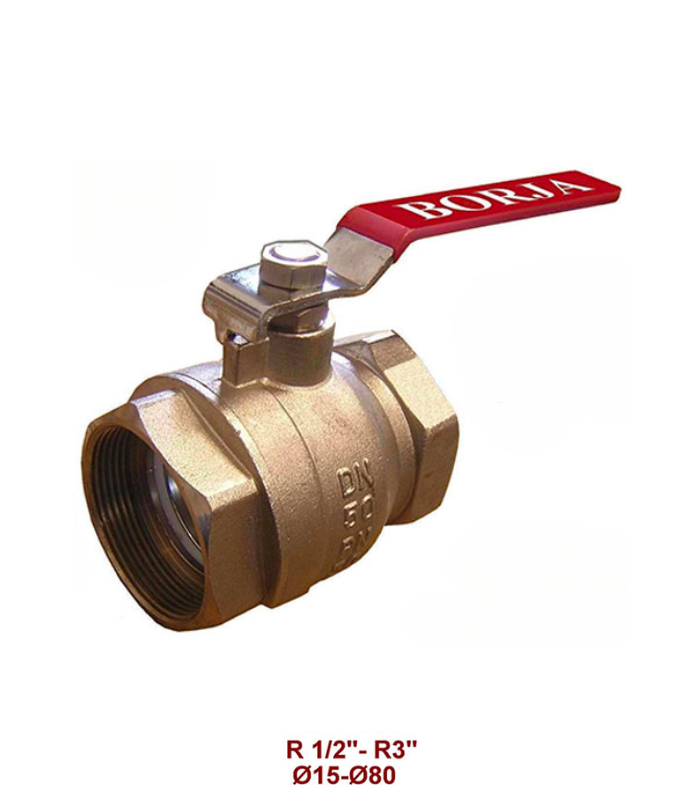Our brass ball valve is used to control fluids, and the area through which they pass to cut, distribute and change the direction of flow in the network. It has the same inner diameter as the pipe (full bore), low pressure drop, high performance, small size and weight, low torque and easy and fast opening and closing operation. It is characterized by a long service life and provides reliable tightness throughout it, even when the valve is not used for a long time.
The valve opens by turning a quarter turn (90º) of the shaft attached to a ball with a hole that floats as it rests on the two PTFE (Teflon®) seats of the valve, in such a way that it allows the passage of the fluid. when the ball hole is aligned with the inlet and outlet of the two valve bodies. When the valve is closed, the orifice will be perpendicular to the inlet and outlet. The standard construction is without an ISO 5211 base and with a handle that indicates the status of the valve (open or closed).
It opens and closes by turning the handle 90º, it can stop the fluid with a small turning torque, it is full bore and has the same interior diameter as the pipe, so there are no losses due to additional friction.
It is primarily used to control the on/off flow of fluids.
It allows it to be easily disassembled, making it optimal for use in applications with aggressive (some) or contaminated media that require quick and thorough cleaning, maintenance and frequent inspection. To separate the two parts of the valve, it must be completely disassembled from the pipe.
The brass ball valve is also suitable for steam, water, oil, gas, air, and some corrosive media. It is more resistant to contaminated media than other valve (gate) types and continues to ensure a reliable seal, even in the case of dirty media.
Brass is very malleable and can be soldered. Brass makes ball valves economical and withstand high pressure, temperature and flow applications.











